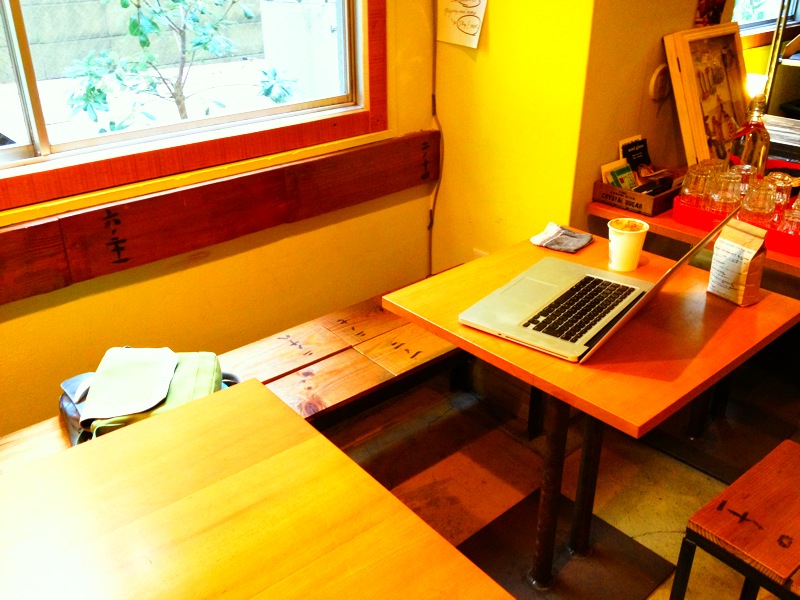The following is an article I wrote for Fukuoka Now.
Like many Westerners, I was always a shower person before coming to Japan—bathing was for kids and the infirm—so, I couldn’t quite understand the appeal of sento, or public bathhouses, that were once ubiquitous throughout Japan. It wasn’t until the sento in my old neighborhood of Daimyo closed its doors for good, to be refashioned as a yakiniku restaurant of all things, that I regretted never having ducked under its noren curtain if only to take a curious peak.
Sento, as the name implies (銭湯, lit. “money + hot water”), are communal bathhouses where customers pay to use the baths. Unlike onsen, which typically source their water from natural hot springs, the water at sento is usually no different from that which comes out of your tap at home. And while some upscale onsen cater to the well-to-do and charge several thousand yen just for a quick dip, sento have a decidedly blue-collar feel: utilitarian, bare-bones, no-frills. Onsen, with their natural settings, outdoor baths encircled in large stones and walls of fragrant cedar, exude a calming grace. Sento, on the other hand, are often housed in buildings that look as if they’re scheduled to be demolished. The sad truth is, many of them are.
Today, there are only thirteen old-school sento left in Fukuoka City, down from a peak of 250 in the 1950s. Throughout the prefecture as a whole, there once were as many as 655 public bath houses. By the late ‘80s, there were still about 80 sento in operation, but their numbers dwindled steadily from then, and in 2005 fell below thirty.
The decline in the number of bathhouses in Fukuoka mirrors the trend in the rest of country. In the postwar years when the population of urban centers swelled and not all dwellings had the luxury of a private bath, sento were a necessity. At their height in 1965, there were some 22,000 sento nationwide. A survey conducted in Tokyo at the time of the Olympics in 1964 found that 39.6% of households used sento regularly. Two years later, however, the figure had fallen to 30.3%. Today, there are fewer than 700 sento in the capital. Similarly, in Osaka, there were 2,531 sento in 1969, more than anywhere else in Japan; today, there are fewer than 900.
Sento are said to have their origins in the Buddhist temples of India, being first introduced to Japan in the Nara Period (710-794). Initially restricted to temples and used predominantly by priests, it wasn’t until the Kamakura Period (1185-1333) that sento, and bathing in general, became a more habitual aspect of daily life in Japan. Many of the design elements one can see in today’s sento, such as the wider entrances, high vaulted ceilings, and bathtubs embedded into the floor, were introduced during the hectic modernization of the Meiji Era (1868-1912).
Today, sento have had to make adjustments in order to survive the dramatic changes in technology, demographics, as well as tastes that have taken place over the years. Where some bathhouses emphasize tradition, appealing to customers who long for Japan’s days of yesteryear, others have re-styled themselves as onsen to attract a younger, more fashion-conscious clientele. Others still have reinvented themselves as “supa sento”, large bathhouses offering a variety of services, such as medicinal baths, electric baths—yes, you read that correctly—massages, Jacuzzis, and saunas. Some former sento have even been repurposed as retro cafés, such Sarasa Nishijin in Kyōto, and art galleries, including Scai The Bathhouse located just north of Tokyo’s Ueno Park.
When I moved to Imaizumi, my new apartment was located kitty-corner from Honjoyu, one of the last of a dying breed of traditional bathhouses. No longer could I ignore this facet of life in Japan. So, mustering up all the courage I could, I set off across the street, my elder son in one arm and an o-furo setto – towels, soap and shampoo – in the other. Not knowing what to expect, I opened the door under a wooden plaque with otoko (男, men) handwritten on it and stuck my head in.
It felt as if I were stepping back in time. Before me was the changing room—old hardwood floors, stained from decades of use, and dingy gray walls made of clay. An ancient scale occupied one corner; a massage chair that had seen better days, another. On the other side of the room was a row of wooden lockers, numbers long faded.
I paid the bandai, or the elderly man sitting in a raised seat at the entrance, the modest entrance fee—¥440 for myself and ¥70 for my son—and stepped in.
On that day there were a handful of other customers, some soaking in the bath, some relaxing in the changing room. My son, upon seeing them, tried to make his way for the exit. It was all I could do to prevent him from running away, get him undressed and bring him, kicking and screaming, into the bathroom. It was only after I had managed to wash the squirming, crying boy and set him in the large tub in the center, that he started to calm down.
Climbing into the bathtub myself, the hot water rising to my shoulders, I exhaled long and slow. All the stress of the past few weeks quickly dissipated with the steam rising from the surface of the water.
You might think that the other customers were irritated by my boy’s tantrum earlier, but for the most part, they seemed genuinely happy that we were there, sharing the experience with them. And that is, I’ve discovered, part of the charm of sento. When everyone is butt-naked and soaking in the same hot water, it’s hard not to feel as if you are part of a community. Regardless of age, or even, in my case, race, you feel that you belong. In an age when neighbors know so very little about each other, including their names, it’s refreshing to be able to go to a place like Honjoyu and let it all, hang out.
By the time of our third visit to the bathhouse, my son, Yu, had so fully taken to the sento custom that it was now as hard to get him out of the bath as it had been to get him into it originally. Seeing that the boy’s fingers were turning into raisins, I asked Yu again if he wanted to get out. No was the answer; he was having too much fun, splashing about and floating on his back, in the big tub.
No sooner had Yu voiced his desire to stay in the bath, however, than an old man entered the bathing room. All loose pale skin and brittle bones, his hair a wild gray mop, the old man looked as if he had been shipwrecked on a deserted island. Yu looked at the old man, then looked at me, and with alarm in his eyes said, “Daddy, Yu-kun’s finished.”
A visit to Honjoyu is now part of our regular routine, particularly on days when it is hosting an event, such as the Banpeiyu Bath on February 20th or the Apple Bath on March 15th. The boys — I have since introduced my younger son to the sento — look forward to going, and if it were up to them, they would probably go every day. The bandai, too, enjoys having the boys over and often gives them cookies to enjoy with their post-bath bottles of ice-cold milk. Now that we have been frequenting the bathhouse for over three years, the old man has become something of a surrogate grandfather for the boys.
Honjoyu has been in business since the postwar years. Wrinkled fingers are crossed in hope that it will continue to operate many years into the future, as well.












